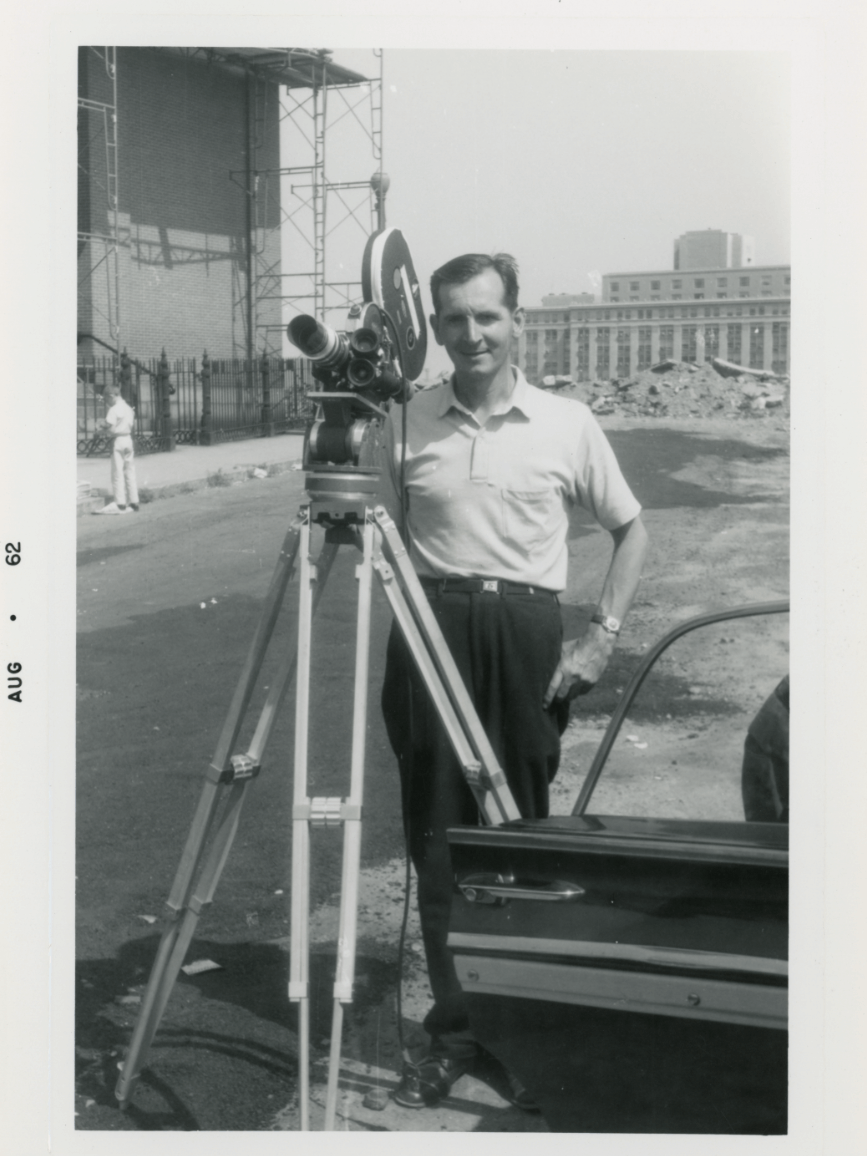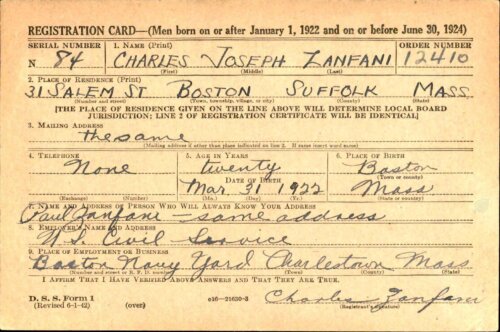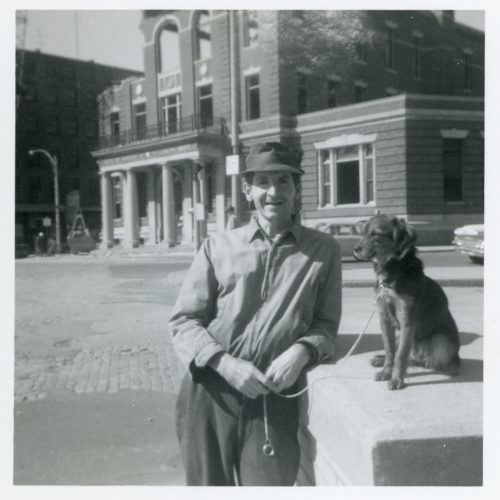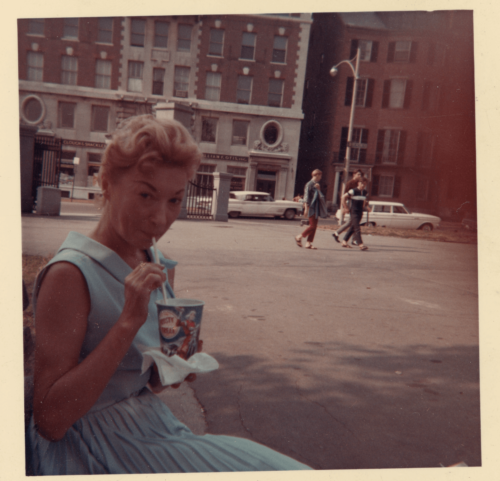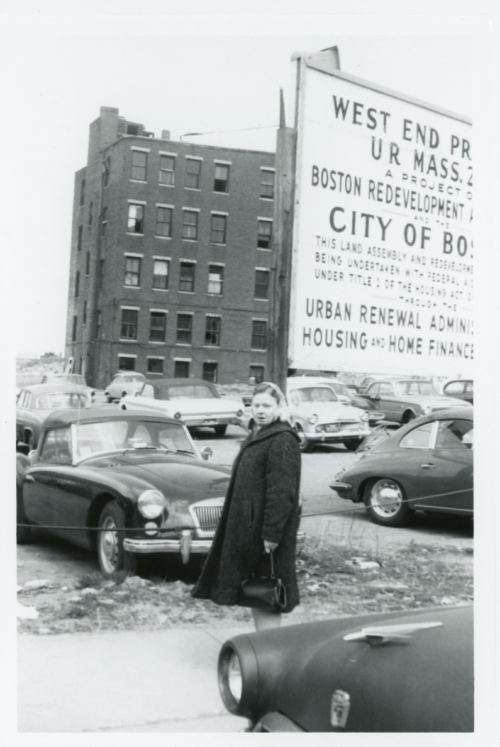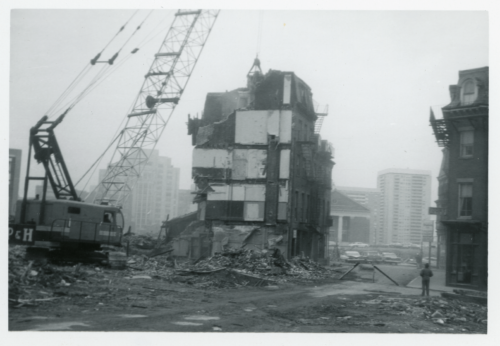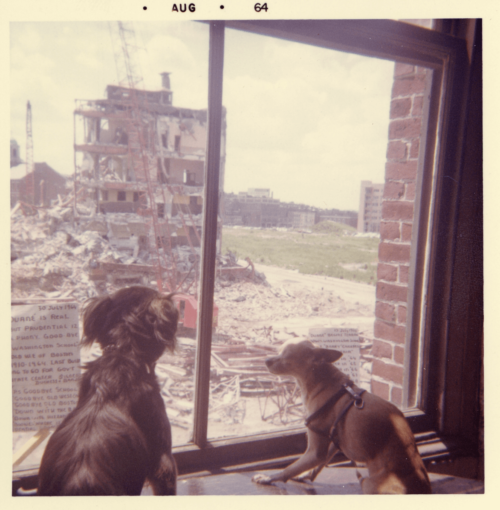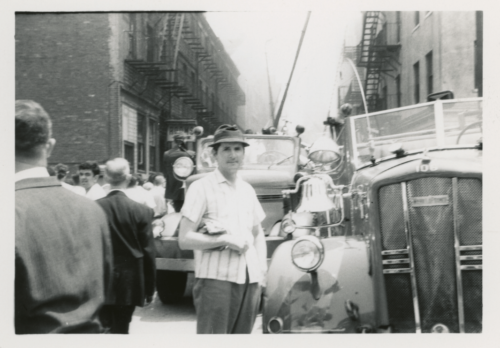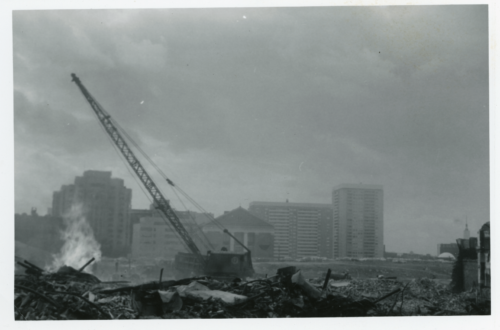Charles Frani
Charles J. “Frani” Zanfani (1922-2001), born in Boston to Italian immigrant parents, first moved to the West End with his family in the 1950s. Displaced by the West End urban renewal project to the North Slope of Beacon Hill, Frani devoted the 1960s to meticulously photographing the destruction of the neighborhood. His photographic collection, preserved at The West End Museum, offers a poignant view into Urban Renewal and its devastating effects on the community.
Charles J. “Frani” Zanfani was born in March 1922 in Boston, Massachusetts to Italian immigrants Pellegrino (Paul) Zanfani and Marie Silva. His parents were married in 1911 in Boston after immigrating separately, although they may have known each other back in their mutual hometown of Pellegrino, Parma, Italy. The Zanfani family was naturalized in July of 1932, living at the time on Morton Street in the Mattapan neighborhood. Charles was the seventh of eleven children in an Italian-speaking household and may have been originally christened Celeste or Celesto and seems to have gone by that name in the home. However, by the 1960s he was going by Charles Frani in his correspondences and in city directories. During his prolific photography period, he seems to have gone by Charles or Chuck Frani.
After attending high school at English High and graduating in June of 1942, Frani worked at the Charlestown Navy Yard for the US Civil Service. He enlisted in the Navy during World War II and worked as a part of the construction battalion “Seabees.” He can be found on Navy muster rolls in the Pacific Theater and served in the Korean war as well, stationed on the destroyer Robert L. Wilson. During the course of his service, he developed, what he called in a 1998 interview, “shell shock, or neurasthenia,” which caused a variety of symptoms that made working difficult for the following decades. It is possible that his limited employment allowed him to spend time taking photos of Boston, especially the West End during its transformation in the 1960s.
At the end of the Korean War, Frani lived with his family in the West End in the 1950s until he was displaced by urban renewal to the North Slope of Beacon Hill. He lived there for many years with various dogs. His dog Duchess is featured in many of his photos. It seems Frani often used Duchess as an ice breaker with photography subjects, as many pose holding his dog’s leash. Leon PJ Drysdale, who donated the Frani Photography Collection to WEM, was given one Duchess’s puppies, whom he named Butchie. For one stretch of time, Frani was an upstairs neighbor of The Red Hat and took photos of its renovations.
Frani liked to travel and crossed much of the East Coast by Greyhound bus. Aside from photography, his other hobbies included watching dog and horse races at Wonderland and Suffolk Downs. He never married but had a few girlfriends over the years. One woman, Bernice, seemed to have been a kind of muse, whom Frani took lots of pictures of in the Boston Common. He had a knack for finding people willing to pose for him and took many candid shots of parades, protests, and other historic events in Boston during the era.
During the 1960s, Frani was “shocked” by the displacement of the West Enders and spent time photographing the destruction and new construction. He watched the Washington School demolition in real time, was on the scene at the Old Howard Fire, followed an ABC film crew as they produced The Lost Neighborhood, and posed with his friends next to BRA signs and rubble piles. His photos show the moments of transition between the Old West End, including neighborhood personalities and family-owned shops, and the tall towers of the New West End apartment buildings.
Frani’s photos show the Old West End slipping into the new, block by block, from the street level, as someone walking through a once familiar place. The world around him changed, but with his camera, Frani was able to preserve some of it before it became unrecognizable. From his window above the Red Hat Tavern, Frani must have been able to see the construction of the Hurley building, as well as the large rubble piles that used to be tenements that turned into parking lots.
Frani gave his photographic collection of the West End’s demolition to lawyer Leon PJ Drysdale around 1983. The photographs were stored in suitcases and dropped at Drysdale’s office to store temporarily. Drysdale and his family had become friends with Frani when the former was a child – Drysdale lived on North Anderson Street and Frani, then, on Bowdoin Street. In his later years, Frani lived in nursing homes in South Boston, Brighton, and Bedford, where he spent time writing letters to the editor and watching game shows – though he disliked television in general. Drysdale, who still had the photographic collection, visited Frani multiple times. Frani died in December 2001 and was buried in Massachusetts National Cemetery in recognition of his military service. After Frani’s death, Drysdale gave the photographic collection to The West End Museum, where it remains today as a poignant chronicle of the neighborhood’s demolition.
Article by Jaydie Halperin, edited by Grace Clipson.
Sources: Ancestry, Naturalization Record; Boston Globe, “English High Diplomas Given 642 at 118th Graduation,” June 12, 1942; Leon PJ Drysdale, Personal Interview (WEM Collection); Linda Rosencrance, “From the Great Depression to the golden years,” The Allston Brighton, October 6-12, 1998; US Census, 1930, 1940, 1950.


